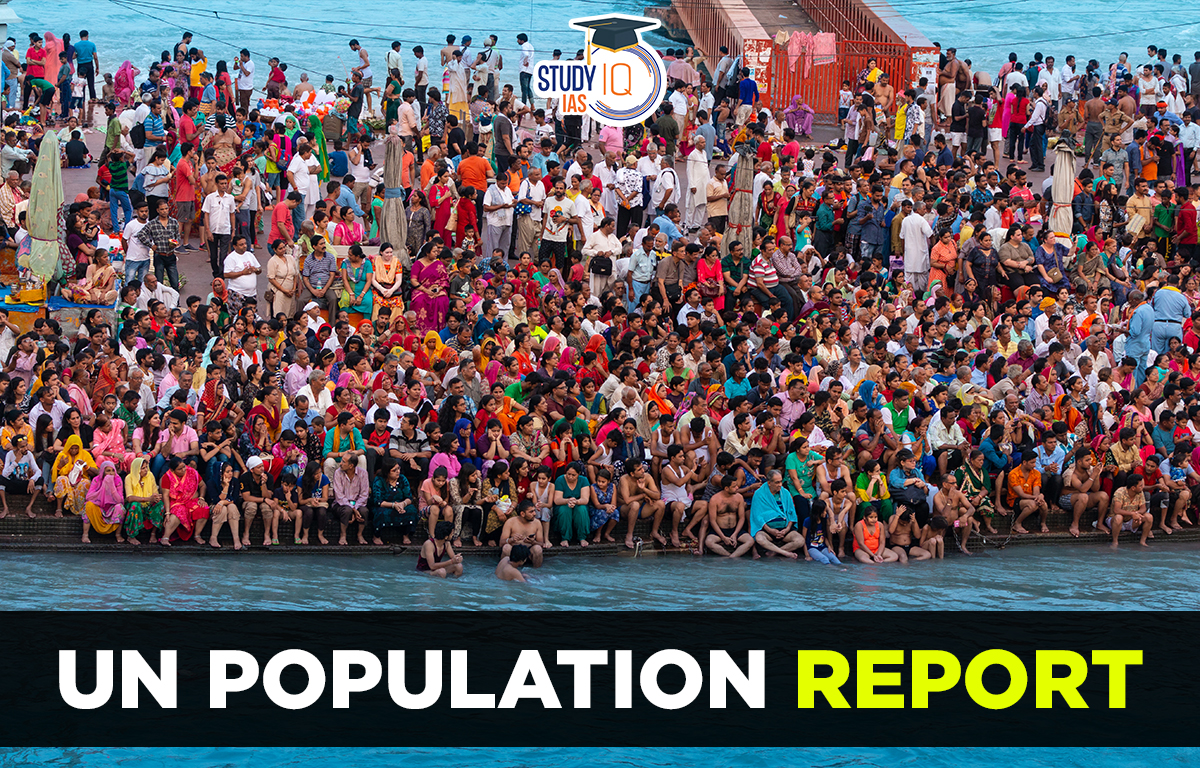Context: India is now the most populous country in the world, having overtaken China in population, the United Nations Population Fund (UNFPA) said in its ‘State of World Population (SOWP) report 2023’.
What are the Key Takeaways from the Report?
World Population Scenario
- Total world population: The UNFPA has said the population of the world is 8,045 million, of which the largest share (65%) is of people between the ages of 15 and 64 years, followed by those in the 10-24 years group (24%), 10% of the population is above 65 years of age.
- One of the reasons for population growth globally flagged by the report has been that of increasing life expectancy, with better access to health care and improving standards of living.
- The report finds that life expectancy among men now stands at 71 years while among women it stands at 76 years.
- Population growth rate: The report said that while population numbers will continue to grow for several decades, latest projections suggest that the rate of global population growth has fallen and has been at less than 1 per cent since 2020.
- This is largely due to declining fertility; around two thirds of people live in a country or area with a total fertility rate at or below 2.1 children per woman (widely considered the “replacement fertility” rate, also called “zero-growth fertility” rate). In 1950 the global fertility rate stood at 5.
- Most populous regions: The world’s two most populous regions are Eastern and South-Eastern Asia, with 2.3 billion people, representing 29 per cent of the global population; and Central and Southern Asia, with 2.1 billion (26 per cent).
- Central and Southern Asia is expected to become the most populous region in the world by 2037.
- More than half of the projected increase in global population up to 2050 will be concentrated in eight countries — the Democratic Republic of the Congo, Egypt, Ethiopia, India, Nigeria, Pakistan, the Philippines and the United Republic of Tanzania.
- Countries of sub-Saharan Africa are expected to continue growing through 2100 and to contribute more than half of the global population increase anticipated through 2050.
- International migration: The report said that international migration that is now the driver of growth in many countries, with 281 million people living outside their country of birth in 2020.
- Migration has also occurred due to war, famines, and other catastrophes, it has pointed out.
- South Asia clocks some of the highest emigration trends, according to the report, with India seeing an estimated net outflow of 3.5 million between 2010 and 2021.
- Pakistan has the highest net flow of migrants of 16.5 million during the same period.
India in the Population Picture
- The UN report states that India now has 1,428.6 million people and is the most populous country in the world, outstripping China’s population.
- As much as 68% of India’s population belongs to the 15-64 years category, and 26% in the 10-24 years group, making India one of the youngest countries in the world.
- However, the fertility rate in India has been steadily dropping. The National Family Health 5 Survey (2019-21) found that India attained a Total Fertility Rate of 2.0 for the first time, less than the replacement level of 2.1, falling from 2.2 in NFHS 4 (2015-16).
- Experts say that India’s large population is a result of the “population momentum” from earlier decades, and that the country’s population is likely to start its decline closer to 2050.
- The increased use of contraceptive methods, spacing of pregnancies, access to health care and the impetus to family planning, besides increasing wealth and education, has contributed to the rate of growth of population slowing.
- Life expectancy for men in India is the same as the global life expectancy of 71 years, while it is marginally lower for women at 74 years.
- Opportunity for India – Demographic Dividend:
- With 68% of its population as youth, and working population, India could have one of the largest workforces in the world, giving it a global advantage.
- And India has a window of opportunity well into the 2040s for reaping its “demographic dividend”.
- This is the situation that India now needs to capitalize on to spur its economic growth further, by educating and skilling its youth, and providing this skilled labour to countries which will be in dire need of such a work force in the near future.


 UPSC CDS 1 Final Result 2025 Declared: D...
UPSC CDS 1 Final Result 2025 Declared: D...
 Ramsar Sites in India 2025 List: Names, ...
Ramsar Sites in India 2025 List: Names, ...
 SEBI’s SWAGAT-FI Framework for Low-Ris...
SEBI’s SWAGAT-FI Framework for Low-Ris...

























